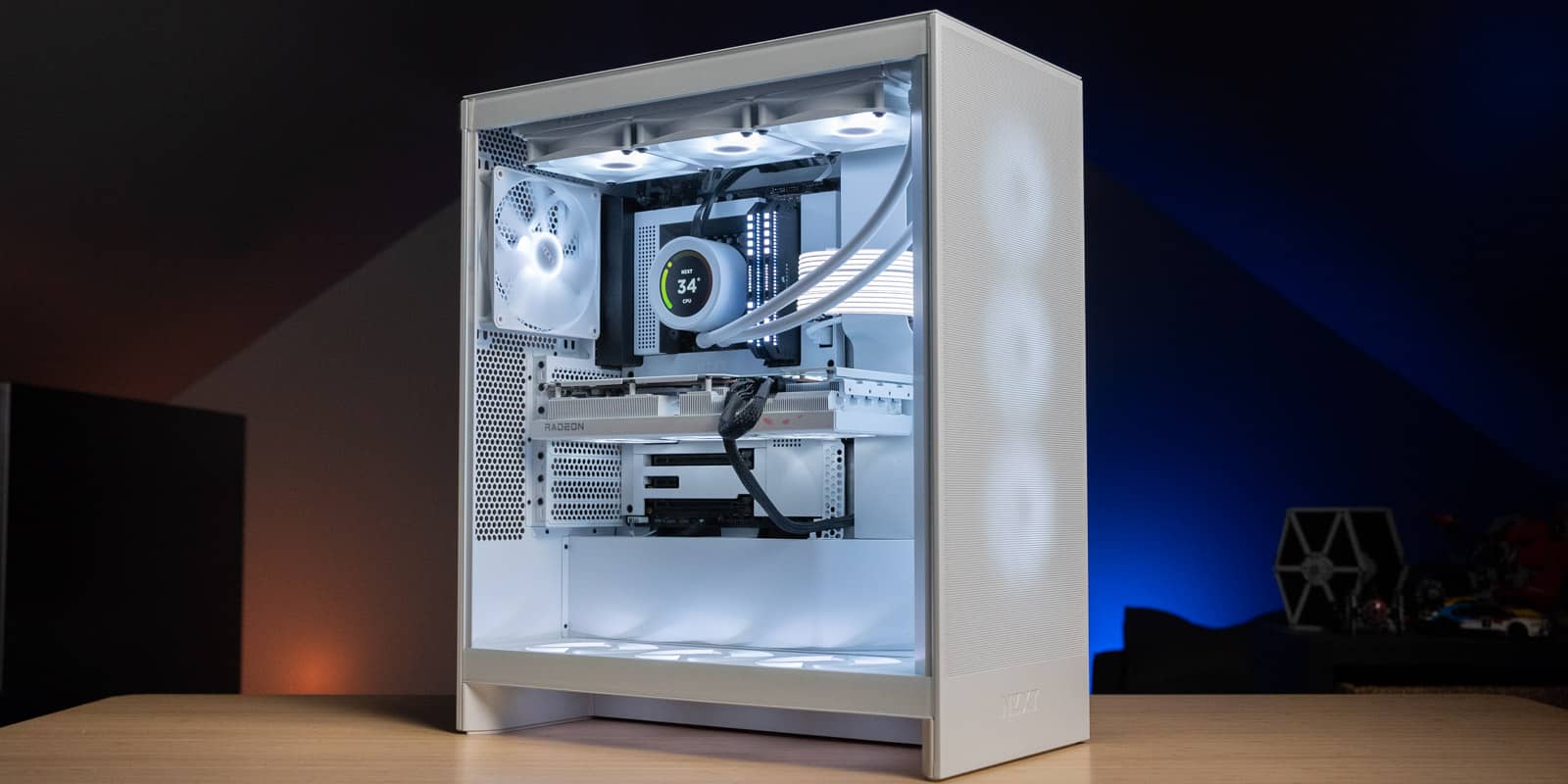
NZXT’s latest case is a further iteration of one of its older cases – the H7 Flow. It takes design elements from dual chamber cases like the H9 and H6, and delivers a spacious area for building and ample room for fans. With a vertical PSU mount, the new H7 Flow can fit three 120mm fans on bottom, 360mm radiator up top, and a 420mm radiator in front. Be sure to hit the video below to see all of the details.
Overview
NZXT is offering the H7 in two different variations – the $130 H7 Flow and $150 H7 Flow RGB, which we got our hands on.
As expected, the RGB version comes with one of NZXT’s new F360 RGB Core single-frame fans mounted in the front. These combine three fans into a single unit for easier assembly and wiring. The non-RGB version comes with three standard non-RGB 120mm fans pre-mounted in the front of the case.
An F360 RGB fan assembly costs $70, while individual F120 RGB fans are only $60. You are paying $10 more for the convenience of having a single fan assembly rather than three separate fans and RGB cables to route and connect.
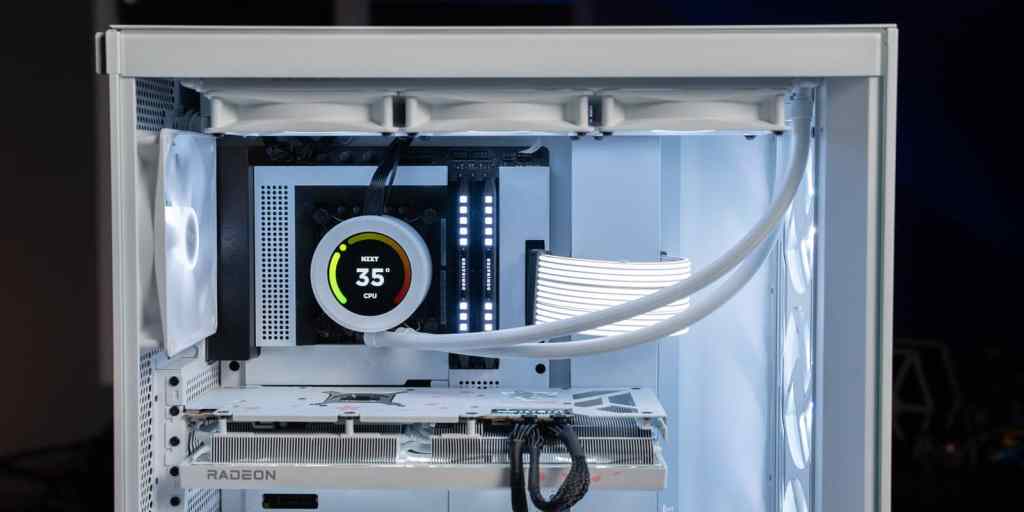
What’s changed?
This new case is a redesign of the H7. At its core, its still an ATX mid-tower, but it looks a little different and allows 360mm of fans to be installed at the bottom of the case.
NZXT is taking a little bit of the designs from its recent H6 and H9 dual-chamber cases to make this happen. Rather an the typical PSU mount at the bottom of the case, the new H7 Flow mounts the PSU vertically which allows the extra room for the fans.
NZXT H7 Flow RGB: Video
Turning the PSU on its side did require the case to be slightly higher, though, measuring just under 21.5 inches tall compared to the 20-inch height of the older H7. It’s also .5 inches wider but measures .5 inches less from front to back.
It’s also interesting to note that NZXT seems to be removing the Elite version from this H7 refresh. The Elite versions of these cases typically come with glass panels up front rather than the mesh of the Flow line, along with three RGB fans and an RGB controller.
The older H7 Elite is still available, but the newer version of the H7 only includes the Flow and Flow RGB.
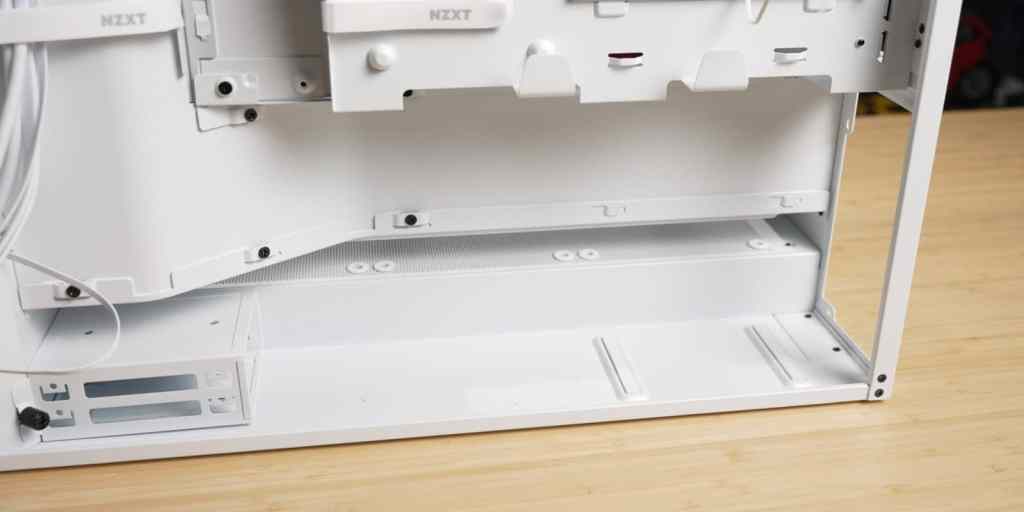
NZXT H7 Flow RGB: Design
Overall, the H7 feels like a large case with plenty of room for building, neatly running cables, and mounting fans.
Like NZXT’s other cases, the name of the game is simplicity. That’s what I typically like about these cases—on the outside, they’re fairly plain. There aren’t any extra gaudy bits.
The large tempered glass panel on this white version is clear. The black version features tinted glass for a darker look.
My only complaint isn’t even with the case itself. With the new F360 RGB Core mounted in the bottom of the case, the LED lights aren’t diffused by the plastic of the fans–it’s a directly shot into my eyes. While not the end of the world, it seems like an oversight that lessens the quality of the fans. This is also the way that NZXT recommends mounting them in the case.
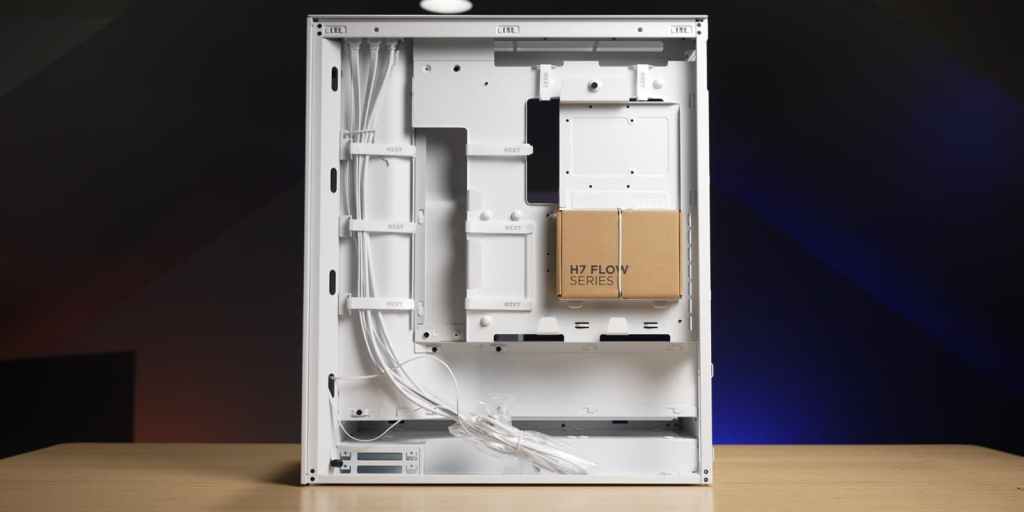
NZXT H7 Flow RGB: Building
To make building easier, all of the panels come off without any tools. With all of the panels removed, I had no issues routing cables throughout the case for a clean build. Like its other cases, NZXT includes plenty of Velcro straps and channels for running cables. They’re also easy to access behind the right side panel.
There was plenty of room at the top of the case for mounting the Kraken Elite RGB Radiator on top, a 140mm RGB fan in the back, and connecting the power cables at the top of the motherboard. That area can get cluttered quickly in smaller cases.
There is a removable bracket for mounting HDDs or SSDs. It also works well as a flat spot to mount a Lian Li RGB controller for the Strimer Plus V2 that I have running to my motherboard.

GPU Mount
There is plenty of room inside the H7 Flow RGB for large GPUs. I’m using the beautiful RX 7800 XT Sakura Edition from PowerColor in this build.
The only issue that I had, which is just an issue with big graphics cards, was some GPU sag. To remedy this, I took one of the PCIe slot covers, measured how high it would need to be to remove the sag, and bent the end. That gave a ledge on both sides of the cover and I was able to wedge it between the bottom of the GPU and the shroud covering the PSU. It might not look as clean, but it also fits the aesthetic of the rest of the case just fine.

Cooling
With up to 10 fans in the case, just like the dual-chamber H6 and H9, the H7 Flow easily gets a lot of airflow. However, when all of those fans are ramped up, it can also get quite loud. When playing Battlefield 2042 with maxed-out graphics, the fans weren’t overly loud, but when testing and putting them up to 100%, they can be loud.
While playing BF 2042, the CPU was hovering around 60 C and the GPU at 53 C. Running Cinebench saw CPU temps go up to 87 C. GPU temps got up to 55 C when running the Heaven benchmark.
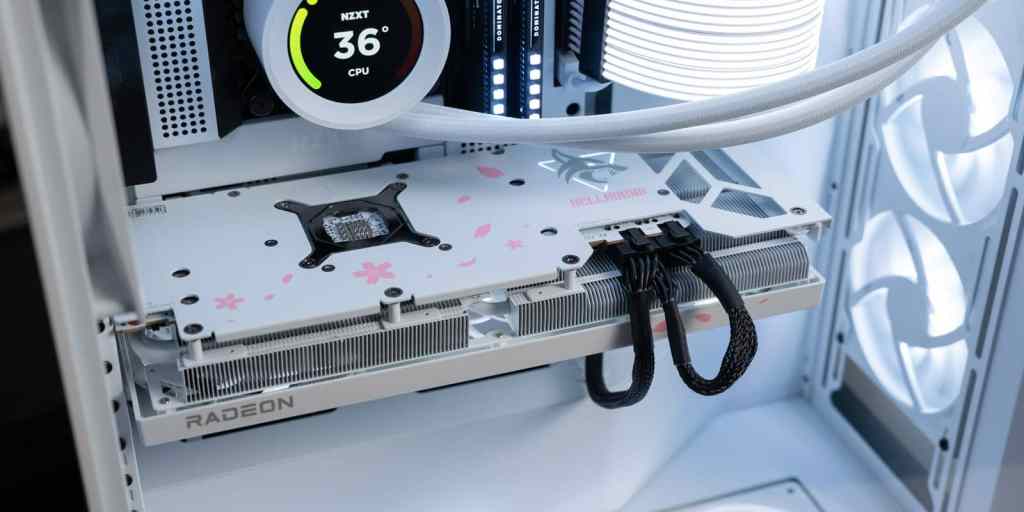
Final thoughts
Altogether, I like the changes to the H7 cases from NZXT. The move to a vertical-mounted PSU makes the case feel even more spacious and the addition of three fans at the bottom helps to move more air.
Personally, I think I still prefer the H6 as a more compact case, but H7 has plenty of room for mounting and building. The $150 price tag for the NZXT H7 Flow RGB keeps it at the higher end of budget computer cases but the inclusion of three RGB fans in the case give building a great starting point.
If you’re looking for something smaller and more affordable, check out the H5 with its interesting fan placement.
Buy NZXT H7 Flow
FTC: We use income earning auto affiliate links. More.





Comments